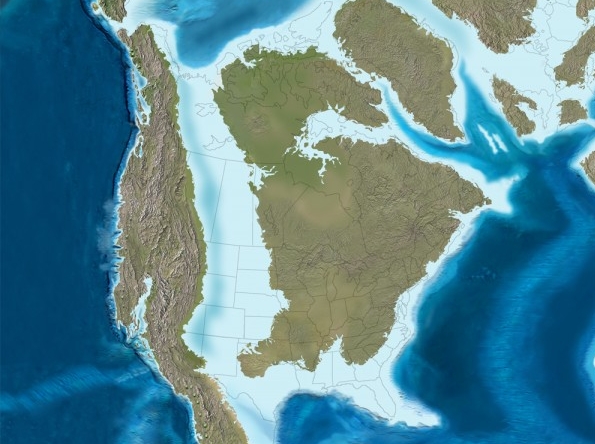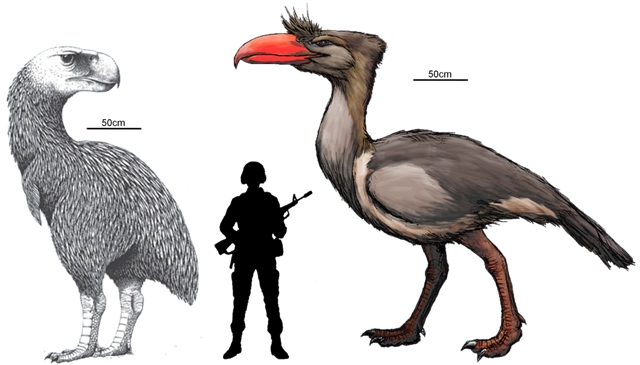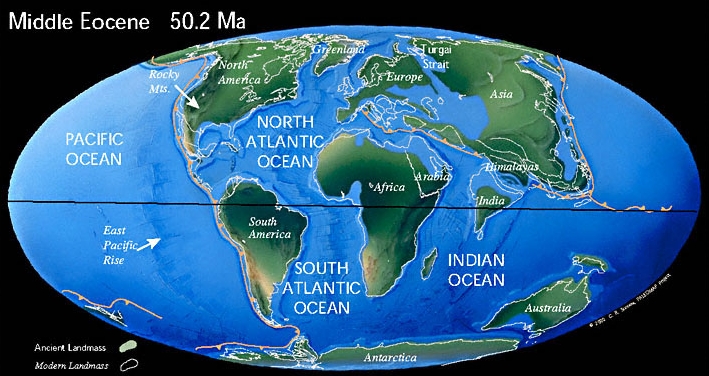
This Cycladic stone head at the Metropolitan Museum of Art is from around 2700-2500 BC. The Cycladic civilization seems to have started around 3200 BC, a bit before the Minoans in nearby Crete, and it kept going strong until around 2000 BC, when they were invaded first by the Minoans and then the Myceneans. I find their art elegant and enigmatic... especially since the paint has worn off.
The whole history of interactions between the Cycladic, Minoan, Mycenaean and Helladic cultures seems fascinating to me, up to and including the invasion of the mysterious 'Sea Peoples', and then the 'Greek Dark Ages' from 1200 to 800 BC. I know so little about all this! Then came the iron age and things get more familiar.
Wikipedia on the Greek Dark Ages:
Around this time large-scale revolts took place in several parts of the Eastern Mediterranean, and attempts to overthrow existing kingdoms were made as a result of economic and political instability by surrounding people who were already plagued with famine and hardship. Part of the Hittite kingdom was invaded and conquered by the so-called Sea Peoples whose origins — perhaps from different parts of the Mediterranean, such as the Black Sea, the Aegean and Anatolian regions - remain obscure.
For the first time in the history of the world, 300 players of the viola da gamba got together! Listen:
Says one: "I maintain that all violas da gamba, of any size, have little invisible arms that are hinged the other way from ours. The first time you put one in your lap, it reaches around you and grabs on and it never lets go. Once you've tried it, you can't stop."
The violas da gamba, or viols, are a family of instruments that are shaped a bit like violins, and played with a bow—but they have frets, and they're tuned in fourths rather than fifths, and the bow is held underhand. They're all played between the knees like a cello, even the small ones.
These days they come in 6 sizes: the big contrabass (also called a violon), the bass, the tenor, the alto, the treble—and the smallest and rarest of all, the pardessus de viole.
Where did they come from? In the mid-1400s, a flat-backed lute called the vihuela or viola da mano was developed in the Kingdom of Aragsn, in what's now Spain. It was plucked, but in the second half of that century people started to play it with a bow—and thus the viola da gamba was born!
For more, visit violadagamba.com. The picture above comes from there!

Ah, the good old days... 85 million years ago, when you could sail west from Appalachia across the Western Interior Seaway to Laramidia. It was a beautiful shallow sea, just 750 meters deep, usually calm, and great for snorkeling - though you had to keep an eye out for occasional sharks and predatory marine reptiles such as plesiosaurs and mosasaurs, which could get up to 18 meters long. I really miss those days.

The worst day of my life was when that 10-kilometer meteor slammed into the Gulf of Mexico about 65 million years ago. It hit with the energy of a 100-teraton bomb and made a tsunami 3 kilometers high... but the worst part, for those of us far away from the impact, was the molten rock that shot into the air and started wildfires around the world... and then the dust, which darkened the sky for years, killing the plants.

Some people think the dinosaurs went extinct when that big meteor hit, but they obviously weren't around. Birds are technically classified as dinosaurs even now, but back then it wasn't 'technical'—just because those bastards had feathers didn't make 'em any less scary. This thing called Gastornis ate horses for snacks! Horse d'oeuvres, you might say. Of course horses were just the size of foxes when they first showed up around 55 million years ago, so this thing isn't as huge as it may look to you youngsters. Still, they got up to 2 meters tall. Nasty, too.

The right to bear arms made a lot of sense back when enormous 'terror birds' roamed Texas and Florida, able to kill their prey with powerful hatchet-like pecks. Even larger ones lived in South America! The biggest were 3 meters tall, with beaks almost half a meter long.
They're all from a family called Phorusrhacidae, which arose around 60 million years ago. For a while people believed they survived until humans showed up in the Americas around 14,000 years ago. But in fact it seems they went extinct much earlier, when North and South America collided about 2 million years ago. Titanis walleri, the species found in Texas and Florida, is the only one known to have migrated north when this happened. Maybe the big mammals were meaner?

I used to really enjoy cruises in the Tethys Sea. Here's what it looked like 50 million years ago, about 15 million years after that big meteorite hit and wiped out lots of dinosaurs. What you call the Mediterranean, the Black Sea and the Caspian Sea are all just leftovers of this much bigger sea. Back then, when it got really hot, it was fun to sail up the Turgai Strait, which separated Europe and Asia, all the way up to the Arctic.
But then Africa crashed into Europe, and India crashed into Asia, and a lot of mountains formed, and the Tethys shrank to almost nothing. That really spoiled my summer vacations.
By the way, this map was made by C. R. Scotese for the PALEOMAP Project. It's definitely worth checking out all those maps!
Remember how I told you about the Mediterranean drying out and becoming a big salty desert? In fact I was driving across it in my jeep one day when someone called me and warned me that the Atlantic had broken through and was rushing in! It was 5.33 million years ago, but I remember it like yesterday. I got out of there fast, and it's a good thing. Once it really got going, the water was pouring down a kilometer drop at 1000 times the flow rate of the Amazon. The water level rose at more than 10 meters a day, and the whole Mediterranean Sea filled up in less than two years! Now they call it the Zanclean Flood.
Today I've been listening to Jon Balke's album Siwan. This is some serious stuff, featuring Jon Balke on harpsichord, Jon Hassell on trumpet, Kheir Kachiche on violin, Helge Norbakken and Pedram Zamini on Middle-Eastern percussion instruments, an orchestra, and the great Lebanese singer Amina Alaoi on vocals. It's inspired by Andalusian music.
The piece 'Toda Ciencia Trascendiendo' has lyrics from the famous poem of that title by the mystic Juan de Yepes Alvarez. It slowly builds up to a galloping, fiery climax with Hassell doing his thing.
The lyrics are in Spanish, but here's an English translation. They're pretty intense. I don't think you need to be a theist to experience this sort of thing.
1
I entered into unknowing,
yet when I saw myself there,
without knowing where I was,
I understood great things;
I will not say what I felt
for I remained in unknowing
transcending all knowledge.
2
That perfect knowledge
was of peace and holiness
held at no remove
in profound solitude;
it was something so secret
that I was left stammering,
transcending all knowledge.
3
I was so 'whelmed,
so absorbed and withdrawn,
that my senses were left
deprived of all their sensing,
and my spirit was given
an understanding while not understanding,
transcending all knowledge.
4
He who truly arrives there
cuts free from himself;
all that he knew before
now seems worthless,
and his knowledge so soars
that he is left in unknowing
transcending all knowledge.
5
The higher he ascends
the less he understands,
because the cloud is dark
which lit up the night;
whoever knows this
remains always in unknowing
transcending all knowledge.
6
This knowledge in unknowing
is so overwhelming
that wise men disputing
can never overthrow it,
for their knowledge does not reach
to the understanding of not
understanding,
transcending all knowledge.
7
And this supreme knowledge
is so exalted
that no power of man or learning
can grasp it;
he who masters himself
will, with knowledge in
unknowing,
always be transcending.
8
And if you should want to hear:
this highest knowledge lies
in the loftiest sense
of the essence of God;
this is a work of his mercy,
to leave one without
understanding,
transcending all knowledge.
One-third human, two-thirds hideous monster, this picture was created by Phil McCarthy's Pareidoloop program, which creates random images and then 'evolves' them to look more like faces. The program takes a long time, but you can see several hours go by in minutes here.
Dopamine is a simple molecule that plays many roles in our brains. It's a neurotransmitter released by neurons in at least 8 pathways in the brain, and it then attaches to 'receptors' on other neurons. It's crucial to the brain's reward system, but scientists argue about whether it's more about pleasure or desire—that is, enjoying or wanting. Nicotine, cocaine and amphetamines produce high levels of dopamine in the brain, messing up its reward system and turning people into addicts. On the other hand, mice who cannot synthesize dopamine don't bother to eat! They lack the pleasure or desire we associate with eating.
August 16, 2012
Do your smart friends think they know all the elements? Ask them about flerovium and livermorium! These elements were first officially named on May 30th. But news travels slow to Singapore, so:
Flerovium is element 114. It sits below lead in the periodic table, but there are hints that it acts chemically more like a noble gas. For atoms this big, the electrons zip around near the speed of light. Special relativity kicks in and changes how chemistry works. Already with gold, I hear special relativity is to blame for its special golden color. But making a metal act like a noble gas—that's serious!
Livermorium is element 116. It sits below polonium in the periodic table, which sits below tellurium, which sits below selenium... and we all know the chemical properties of that element. (If not, ask your smart friends.) But nobody knows if livermorium is chemically like polonium, because only about 35 atoms of the stuff have been studied!
Flerovium and livermorium used to be called by the tentative names 'ununquadium' and 'ununhexium', after their atomic numbers. My favorite name like this is 'unununium': element 111. But now it's called 'roentgenium'.
The really important thing about flerovium is that it may sit close to the island of stability, a hypothesized patch of super-heavy elements that decay more slowly than their neighbors. But the longest-lived isotope of flerovium we've seen so far is flerovium-289, with a half-life of about 2.6 seconds. There's some evidence for another form, flerovium-289b, which lasts ten or twenty times longer. Flerovium-288 should last even longer: radioactive atoms last longer when they have certain 'magic numbers' of protons and neutrons, and magic numbers are always even.
© 2012 John Baez
baez@math.removethis.ucr.andthis.edu